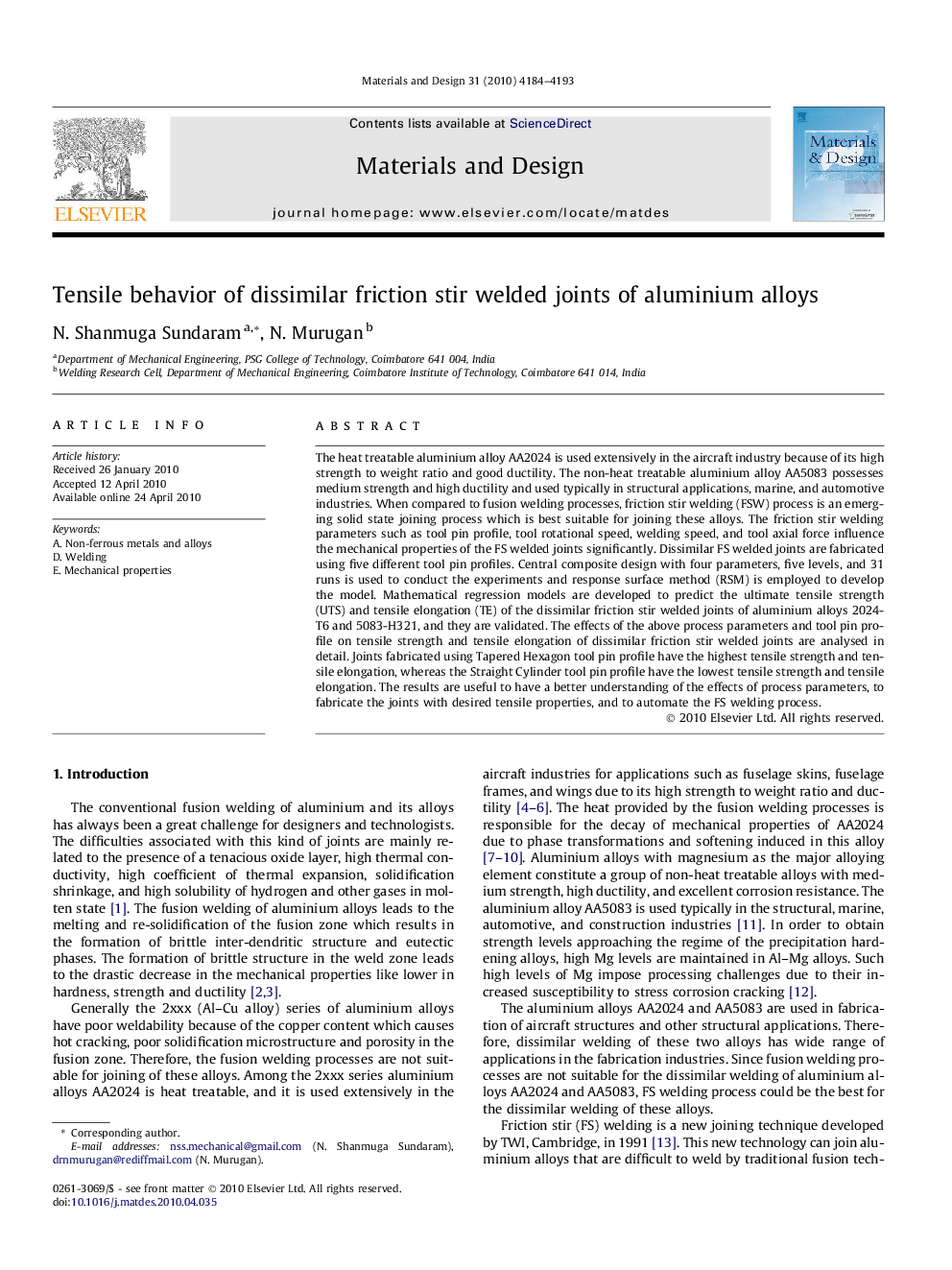| کد مقاله | کد نشریه | سال انتشار | مقاله انگلیسی | نسخه تمام متن |
|---|---|---|---|---|
| 831815 | 908111 | 2010 | 10 صفحه PDF | دانلود رایگان |

The heat treatable aluminium alloy AA2024 is used extensively in the aircraft industry because of its high strength to weight ratio and good ductility. The non-heat treatable aluminium alloy AA5083 possesses medium strength and high ductility and used typically in structural applications, marine, and automotive industries. When compared to fusion welding processes, friction stir welding (FSW) process is an emerging solid state joining process which is best suitable for joining these alloys. The friction stir welding parameters such as tool pin profile, tool rotational speed, welding speed, and tool axial force influence the mechanical properties of the FS welded joints significantly. Dissimilar FS welded joints are fabricated using five different tool pin profiles. Central composite design with four parameters, five levels, and 31 runs is used to conduct the experiments and response surface method (RSM) is employed to develop the model. Mathematical regression models are developed to predict the ultimate tensile strength (UTS) and tensile elongation (TE) of the dissimilar friction stir welded joints of aluminium alloys 2024-T6 and 5083-H321, and they are validated. The effects of the above process parameters and tool pin profile on tensile strength and tensile elongation of dissimilar friction stir welded joints are analysed in detail. Joints fabricated using Tapered Hexagon tool pin profile have the highest tensile strength and tensile elongation, whereas the Straight Cylinder tool pin profile have the lowest tensile strength and tensile elongation. The results are useful to have a better understanding of the effects of process parameters, to fabricate the joints with desired tensile properties, and to automate the FS welding process.
Journal: Materials & Design - Volume 31, Issue 9, October 2010, Pages 4184–4193